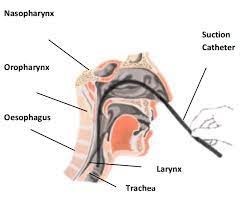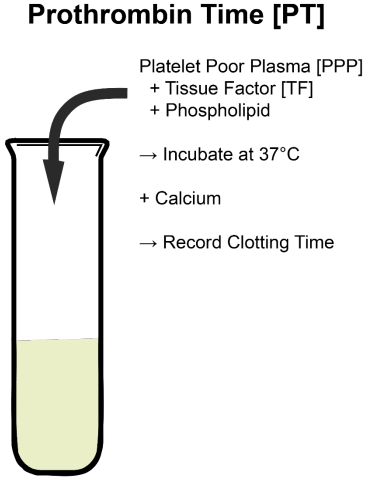A nurse is performing nasopharyngeal suctioning for an adult client. Which of the following techniques should the nurse use?
Apply intermittent suction for 30 seconds.
Insert the catheter 10 cm (4 in).
Apply suction while inserting the catheter.
Wait 1 min between suctioning attempts.
The Correct Answer is D
Waiting 1 minute between suctioning attempts allows the client to recover and ensures that the procedure is not overly invasive. It also helps to prevent the client from becoming hypoxic.
The distance that the nasopharyngeal catheter should be inserted varies from person to person and therefore 10 cm is not standard.
During nasopharyngeal suctioning, the nurse should apply suction intermittently while withdrawing the catheter, not during insertion. Applying suction during insertion can cause tissue damage and increase the risk of trauma.
The nurse should also apply intermittent suction for no longer than 15 seconds to prevent hypoxia and damage to the mucosal lining. Suctioning for an extended period can cause discomfort and harm to the client.

Nursing Test Bank
Naxlex Comprehensive Predictor Exams
Related Questions
Correct Answer is A
Explanation
A nurse caring for a client who is 2 days postoperative following an above-the-knee amputation should encourage the client to use the overbed trapeze. This will promote independence and mobility by allowing the client to reposition themselves in bed and perform upper body exercises.
Maintaining abduction of the client's residual limb with a pillow can help prevent contractures, but it does not directly promote mobility.
Cautioning the client to avoid a prone position while in bed is appropriate to prevent pressure injuries and promote healing, but it also does not directly promote mobility.
Keeping a loose, absorbent dressing over the client's surgical site is important for infection control but does not promote mobility.

Correct Answer is D
Explanation
Prothrombin time.
Explanation:
When a client is prescribed warfarin, monitoring the prothrombin time (PT) and the International Normalized Ratio (INR) is crucial. Warfarin is an anticoagulant medication that affects the clotting ability of the blood by inhibiting vitamin K-dependent clotting factors. Monitoring the prothrombin time and INR helps determine the client's blood's ability to clot and the appropriate dosage of warfarin to maintain the desired therapeutic range.
Option a (Triiodothyronine) is a thyroid hormone and is not directly related to warfarin therapy.
Option b (Blood urea nitrogen) is a measure of kidney function and is also not directly related to warfarin therapy.
Option c (Arterial blood gases) is a measure of oxygen and carbon dioxide levels in the blood and is not related to warfarin therapy.

Whether you are a student looking to ace your exams or a practicing nurse seeking to enhance your expertise , our nursing education contents will empower you with the confidence and competence to make a difference in the lives of patients and become a respected leader in the healthcare field.
Visit Naxlex, invest in your future and unlock endless possibilities with our unparalleled nursing education contents today
Report Wrong Answer on the Current Question
Do you disagree with the answer? If yes, what is your expected answer? Explain.
Kindly be descriptive with the issue you are facing.
